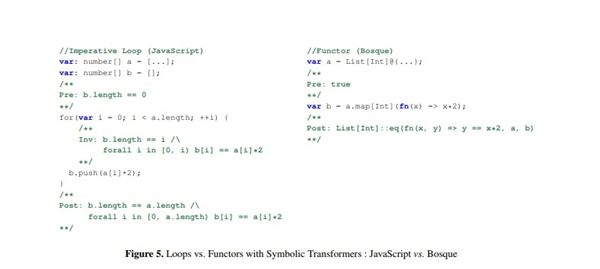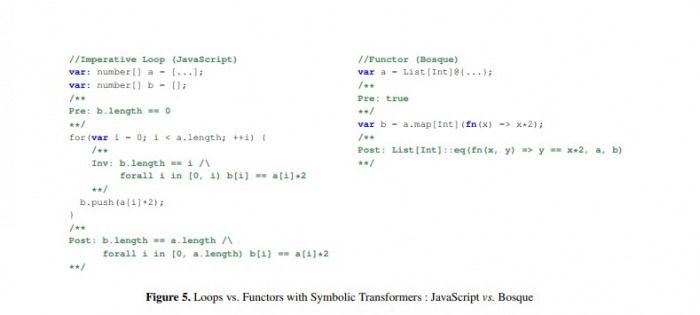Golang链表数据结构的设计与编码实现
 发布于2024-11-29 阅读(0)
发布于2024-11-29 阅读(0)
扫一扫,手机访问
Golang中链表数据结构的设计与实现
引言:
链表是一种常见的数据结构,用于存储一系列的节点。每个节点包含数据和指向下一个节点的指针。在Golang中,我们可以通过使用结构体和指针来实现链表。
- 链表的设计与结构定义
在Golang中,我们可以使用结构体和指针来定义链表的节点和链表本身的结构。节点结构体包含一个数据字段和一个指向下一个节点的指针。
type Node struct {
data interface{} // 存储数据
next *Node // 指向下一个节点的指针
}
type LinkedList struct {
head *Node // 链表头节点的指针
}- 链表的初始化
在创建链表时,我们需要初始化一个空链表。初始化链表时,链表头节点指针为空。
func NewLinkedList() *LinkedList {
return &LinkedList{}
}- 链表的插入
链表的插入操作将节点添加到链表的尾部。首先,我们需要创建一个新节点,并将数据赋值给它。然后,我们找到链表的最后一个节点,并将其next指针指向新节点。
func (list *LinkedList) Insert(data interface{}) {
newNode := &Node{data: data} // 创建新节点
if list.head == nil { // 链表为空
list.head = newNode // 直接将新节点设为头节点
} else {
current := list.head
for current.next != nil {
current = current.next // 找到链表的最后一个节点
}
current.next = newNode // 将新节点链接到最后一个节点的next指针
}
}- 链表的删除
链表的删除操作将找到并删除链表中特定节点。首先,我们需要找到要删除的节点的前一个节点,并将其next指针设置为被删除节点的next指针。
func (list *LinkedList) Delete(data interface{}) {
if list.head == nil {
return // 链表为空,无需删除
}
if list.head.data == data { // 头节点需要删除
list.head = list.head.next
return
}
current := list.head
for current.next != nil {
if current.next.data == data { // 找到要删除节点的前一个节点
current.next = current.next.next
return
}
current = current.next
}
}- 链表的遍历
链表的遍历操作将打印链表中的所有节点。
func (list *LinkedList) Traverse() {
if list.head == nil {
return // 链表为空
}
current := list.head
for current != nil {
fmt.Println(current.data)
current = current.next
}
}- 链表的使用示例
func main() {
list := NewLinkedList() // 创建一个新链表
list.Insert(1) // 插入节点1
list.Insert(2) // 插入节点2
list.Insert(3) // 插入节点3
list.Traverse() // 遍历链表,输出: 1 2 3
list.Delete(2) // 删除节点2
list.Traverse() // 遍历链表,输出: 1 3
}结论:
在Golang中,通过使用结构体和指针,我们可以很方便地实现链表数据结构。链表的插入、删除和遍历操作也很简单明了,可以方便地应用于实际问题中。
下一篇:揭开直接安装pip的简便方法
产品推荐
-

售后无忧
立即购买>- DAEMON Tools Lite 10【序列号终身授权 + 中文版 + Win】
-
¥150.00
office旗舰店
-

售后无忧
立即购买>- DAEMON Tools Ultra 5【序列号终身授权 + 中文版 + Win】
-
¥198.00
office旗舰店
-

售后无忧
立即购买>- DAEMON Tools Pro 8【序列号终身授权 + 中文版 + Win】
-
¥189.00
office旗舰店
-

售后无忧
立即购买>- CorelDRAW X8 简体中文【标准版 + Win】
-
¥1788.00
office旗舰店
-
 正版软件
正版软件
- 解密 Java 文件操作:突破文件操作的限制
- 文件操作是Java程序设计中至关重要的一环,因为它允许程序与文件系统交互,存储和检索数据。本文旨在深入揭秘Java文件操作的奥秘,为读者提供全面且深入的理解。文件输入文件输入涉及从文件中读取数据。在Java中,主要使用以下类和方法来实现文件输入:FileInputStream:允许读取原始字节数据。DatainputStream:提供了读取特定数据类型的便利方法(例如int、long和float)。Scanner:一个更高级别的类,用于以一行行的形式读取文本文件。文件输出文件输出涉及将数据写入文件。以下类
- 1分钟前 引言 0
-
 正版软件
正版软件
- 在Java中平衡文件操作的灵活性和效率
- JavaNIO(NewI/O)JavaNIO是SunMicrosystems于Java1.4版本引入的一种新型I/O机制,旨在提供更高的性能和可伸缩性。Nio提供了非阻塞I/O操作,允许应用程序在无需等待I/O操作完成的情况下继续处理其他任务。这种异步处理方式减少了线程开销,提高了并发处理能力。优点:非阻塞I/O,提高并发性高效的内存映射文件访问可定制的缓冲区管理缺点:编程复杂度更高可能造成额外内存开销JavaBIO(BlockingI/O)JavaBIO是传统的文件I/O机制,使用阻塞式I/O操作。当执
- 11分钟前 0
-
 正版软件
正版软件
- 使用PHP绘制一个椭圆
- 这篇文章将为大家详细讲解有关PHP画一个椭圆,小编觉得挺实用的,因此分享给大家做个参考,希望大家阅读完这篇文章后可以有所收获。PHP画椭圆前言php语言提供了丰富的函数库,其中GD库专门用于图像处理,可以在PHP中绘制各种形状,包括椭圆。绘制椭圆1.加载GD库<?php//加载GD库imagettftext($im,12,0,50,50,$color,$font,$text);?>2.创建图像<?php//创建一个新图像$im=imagecreatetruecolor(640,480);
- 26分钟前 PHP编程 GD库 PHP图像处理 后端开发 绘制椭圆 PHP画一个椭圆 线条宽度 椭圆弧 0
-
 正版软件
正版软件
- 探索Java文件操作的最新趋势:数据处理的未来
- 1.大数据处理现代企业处理的数据量不断爆炸式增长,传统的序列文件操作方式已无法满足大规模数据处理的需求。因此,Java引入了大数据处理框架,如hadoop和spark,这些框架提供分布式文件系统和并行计算能力,可以高效地处理TB甚至PB级的数据。2.云计算存储云计算的兴起为文件存储提供了新的选择。Java可以使用云存储api与AmazonS3、GoogleCloudStorage等云存储服务集成,将数据存储在云端,从而降低本地存储成本,提高数据可访问性和可靠性。3.流式数据处理实时数据流分析已成为许多领域
- 41分钟前 0
-
 正版软件
正版软件
- 提升Java文件处理效率和可靠性的最佳实践
- 字节流(InputStream/OutputStream):适用于处理原始二进制数据。字符流(Reader/Writer):适用于处理文本文件。根据数据的类型和操作要求选择合适的流可以提高效率。2.使用缓冲流缓冲流通过在内存中临时存储数据来减少对底层存储设备的I/O操作数量。BufferedInputStream/BufferedOutputStream:针对字节流。BufferedReader/BufferedWriter:针对字符流。3.避免不必要的刷新刷新流会将数据从内存写入底层存储设备。频繁刷新会
- 56分钟前 0
最新发布
-
 1
1
-
 2
2
-
3
- Vue组件中如何处理图片预览和缩放问题
- 491天前
-
 4
4
-
 5
5
-
 6
6
- Python实战教程:批量转换多种音乐格式
- 662天前
-
7
- WebSocket协议的优势与劣势分析
- 493天前
-
8
- 如何在在线答题中实现试卷的自动批改和自动评分
- 490天前
-
9
- java动态代理实例代码分析
- 663天前
相关推荐
热门关注
-

- Xshell 6 简体中文
- ¥899.00-¥1149.00
-

- DaVinci Resolve Studio 16 简体中文
- ¥2550.00-¥2550.00
-

- Camtasia 2019 简体中文
- ¥689.00-¥689.00
-

- Luminar 3 简体中文
- ¥288.00-¥288.00
-

- Apowersoft 录屏王 简体中文
- ¥129.00-¥339.00